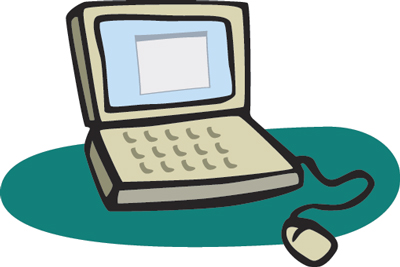LAPTOP SHOPPING TIPS
by
Kelle Campbell, National Federation of Independent Business

Laptops
(also called notebooks) now offer almost everything that a personal
desktop computer can, plus the convenience of portability. You have
a huge range of choices, but certain characteristics can help you find
the most suitable laptop.
First,
note that Tablet PCs, which allow users to scribble notes and diagrams,
are not technically laptops. However, many laptops are now marketed
as a “notebook and tablet in one,” so you may want to include
those in your search.
Weight
Laptops
range from extremely light ultraportables to weighty desktop replacements.
Below are the weight classes according to CNET.com:
- Ultraportables:
4 pounds or less
- Thin-and-light:
4 to 6 pounds
- Midsize/mainstream:
6 to 8 pounds
- Desktop
replacement: 7 1/2 pounds or more
Heavier
laptops contain larger hard drives, several ports for peripheral devices,
bigger screens and keyboards, etc., all of which adds to their weight.
A few ultraportables do not even have an internal CD or DVD drive. Thin-and-light
laptops provide a bit more functionality, while staying on the low side
of the weight spectrum.
Obviously,
businesspeople on the go are better off with ultraportables or thin-and-lights.
Non-travelers can consider midsize laptops and desktop replacements
for better quality performance.
Processing/clock
speed
The
speed at which a laptop performs tasks is measured in megahertz (MHz)
or the more common and faster gigahertz (GHz) per second. Don't compare
the speeds of different brands of microprocessors (a microprocessor
from Intel and one from AMD, for example). One brand's 1.73 GHz processor
may outperform another brand's 2.0 GHz processor. Your best option is
to test demonstration models, taking note of which laptops perform to
your satisfaction, and what microprocessors they use.
Buy
a laptop with the fastest processing speed you can afford, and if you'll
be working on heavy duty tasks such as multimedia projects, definitely
look for 2.0 GHz and above.
Random Access Memory (RAM)
Memory
is measured in megabytes (MB) and gigabytes (GB). The more RAM your
laptop has, the more smoothly it operates, and the more software applications
you can run at once. Aim for a laptop with more memory than any of your
applications will need. For example, the Microsoft Web site recommends
128 MB or higher for Windows XP Professional, but many experts recommend
256 MB as the minimum for XP.
Many
laptops allow you to buy and install extra RAM, but that will involve
determining how much your laptop will accommodate and what type: Synchronous
Dynamic RAM (SDRAM) or Double-Data-Rate (DDR), etc. It’s easier
to buy a laptop with as much RAM as you can afford.
Battery life
Look
for laptops that use lithium-ion batteries for a longer charge. Your
next best option is nickel-metal hydride batteries. If you regularly
use your laptop battery, you should know that high processing speeds
and large amounts of RAM will quickly drain the battery. You may have
to compromise between performance and longevity.
If
you travel overseas, buy a power supply adapter kit to ensure that you
can use your laptop wherever you go. It’s also a good idea to
buy a backup battery and check how long it takes to recharge the batteries.
Screen size and resolution
Screen
sizes are measured diagonally and range from 12 to17 inches. The screen
resolution determines how clear images are and ranges from 800 x 600
pixels to a crisp 1600 x 1200. While larger screens with high resolutions
allow for easy viewing, smaller screens use less battery power.
Hard drive capacity
Like
RAM, hard drive capacity is measured in megabytes or gigabytes. Ensure
that your laptop will have enough hard drive storage for all your software
as well as the files you'll create and store. Calculate the storage
requirements of the software that you plan to install and then look
for at least twice that capacity. If you are going to create multimedia
files, then add an extra 10 to 40 GB.
If
you can't afford as much storage as you'd like, you can purchase an
external hard drive, zip drive or some other storage device to expand
capacity.
Price
As
of this writing, prices start as low as $400 and can hit $3,000. You
can make your dollar go further by looking at sales, rebates or refurbished
units that have a warranty.
In
all cases, read the warranty beforehand (you may have to visit the manufacturer’s
Web site for this). See what voids coverage, if it’s worth getting
an extended warranty, whether you'll be charged for returning a damaged
unit, and anything else that adds to your total cost of ownership.
You
will probably be interested in other features such as security, wireless
connectivity or sudden motion sensors that protect data in case of falls.
However, the attributes listed above will help you pick a tool that
best accommodates the way you work.
© 2015 TLC Magazine Online, Inc. |